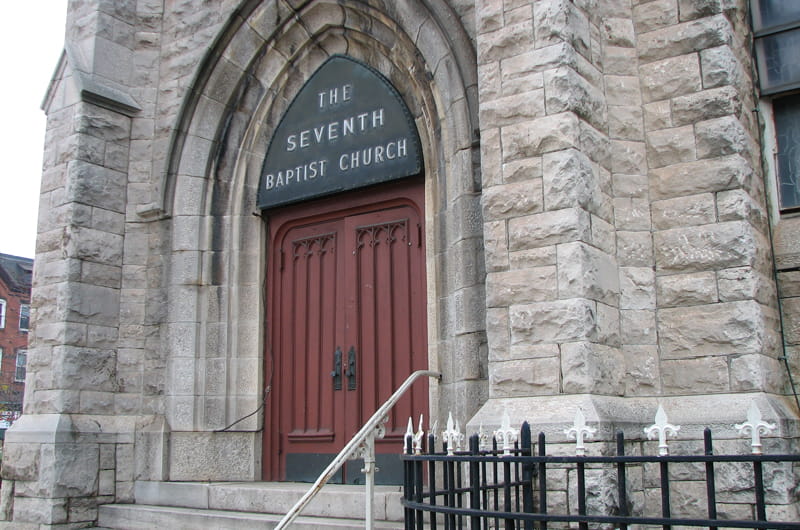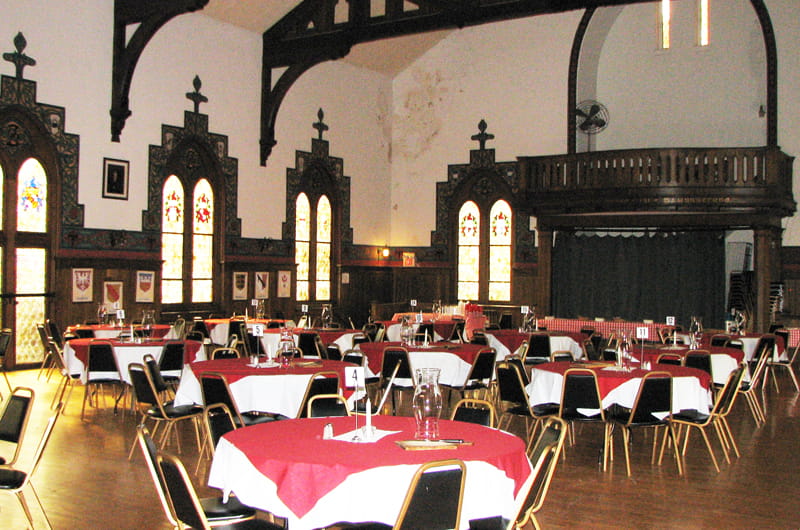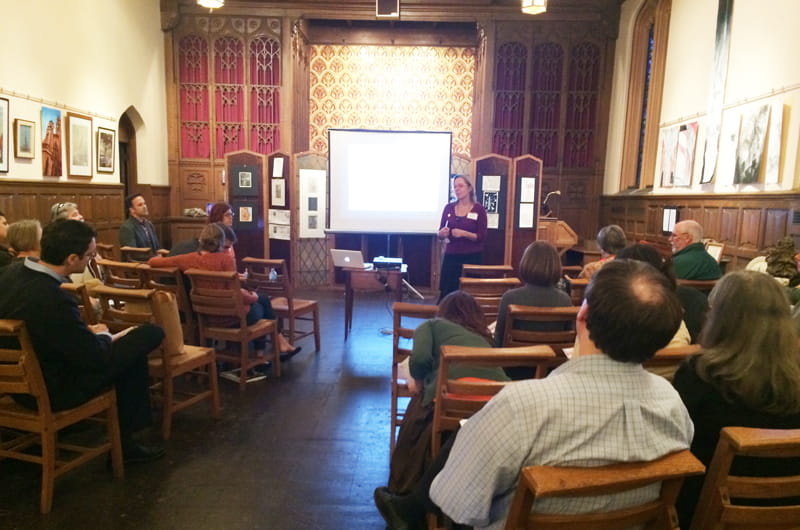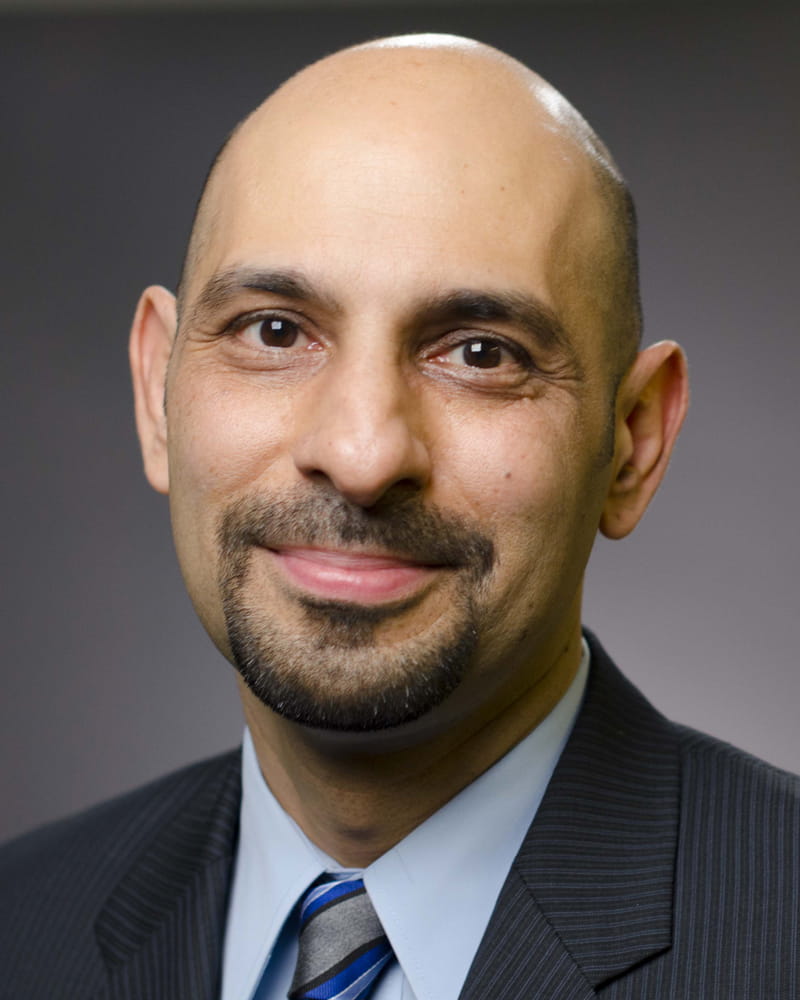Can Churches and Artists Save Each Other?

Artists need space. Churches have space.
Creating a symbiotic relationship in which historic sacred spaces, such as churches, help to alleviate performing artists’ need for space could benefit both groups and better integrate them into the community, according to a new study from Drexel University. However, an intermediary is needed to help facilitate these relationships, the study found.
The study was led by Neville Vakharia, an assistant professor and research director of arts administration in Drexel’s Antoinette Westphal College of Media Arts & Design, and Partners for Sacred Places, a national organization dedicated to the stewardship and active community use of historic sacred spaces.

The national, three-city research project began in Baltimore, Maryland, but is part of a broader project that has already extended to Austin, Texas, and will launch in Detroit, Michigan on May 6, to determine if this is a common issue in cities and whether a program could be developed to serve as a liaison between artists and historic sacred spaces nationwide.
Through surveys and focus groups of artists living or working in Baltimore, researchers found that performing artists and organizations see a clear need for more spaces for performance, rehearsal and administration, and that a home space would serve as a means to integrate their work with a community.
The researchers also discovered, through in-depth site surveys of historic sacred spaces, that the leaders of historic spaces see an immediate opportunity for artists to start using their spaces. There is even a sense of urgency from these leaders to initiate collaborations, though they lack the capacity and the resources to be proactive in their approach. According to the researchers, these institutions see the creation of artists’ home spaces as a way to improve the vitality of their communities and want to see their unused or underused spaces activated.

Participants on both sides asserted the need for a dedicated program that could provide them with the information and resources necessary to create a successful collaboration and to support them throughout the process.
The research brief on the findings from Baltimore can be downloaded here. Austin’s brief is currently in process, and the full report on all three cities will be available this fall in conjunction with presentations to funding agencies, service organizations and denominational offices.
The study was funded by primarily through a grant from the Doris Duke Charitable Foundation to Partners for Sacred Places. PSP, which has a Philadelphia office, commissioned the study to examine whether their pilot work in Philadelphia, which matched performing artists with historic sacred spaces, was replicable nationally. Vakharia worked with PSP’s Arts in Sacred Places program director Karen DiLossi on this initiative.
Method
The focus groups provided more detailed and nuanced insights from the city’s artists, demonstrating the struggles facing artists with regard to the current state of performance, rehearsal and administrative spaces as well their willingness to explore potential solutions and programs.
“Artists are part of a community’s fabric,” said Vakharia.
“Through this research, we’ve learned that artists want to be part of a community and engage with its members in meaningful ways. Artists want to serve children that have no other creative outlets, they want to engage seniors to help them tell their stories and they want to create art that reflects the voices of a neighborhood. Their lack of a home space prevents this from happening, in addition to limiting their ability to practice and hone their craft.”
To gain an understanding of the capacity for usage of historic sacred spaces by performing artists and organizations, a site survey and inventory of six sacred spaces was created to understand the physical assets and amenities of each space. Interviews with each space’s clergy and lay leadership were conducted to determine the willingness potential to share their spaces with artists.
“It was overwhelming to experience the vastness of both the congregations’ physical facilities and emotional supportiveness,” said DiLossi. “These are not just buildings within any given neighborhood but also serve as important community centers. The leadership at the congregations all believed that inviting artists to share their underused spaces would not only add to their own cache but also would be an additional asset to the surrounding neighbors."
"They were immediately dreaming up ways to partner together with the artists once they were in the building,” DiLossi said.
Findings

Overall, the findings present a clear need from performing artists for home spaces that would improve their ability to create and develop their work while increasing their ability to be part of their communities.
Artists see value in the use of sacred spaces for their performance, rehearsal and administrative needs, though there is some concern about limitations to artistic expression. Artists also see value in a programmatic approach to addressing their space needs, as there is currently no entity or resource to share information on spaces and facilitate collaborations.
Both faith and lay leadership in charge of sacred spaces demonstrate a willingness to provide opportunities for performing artists and organizations, though some face their own limitations in creating collaborations, particularly in outreach to artists.
“Through this research, we learned that sacred spaces in Baltimore are more than willing to house artists and their work, though they do not have the resources or programs to be able to do so," Vakharia said.
"In fact, these sacred spaces see serving artists as part of their work in supporting their communities, so there is a mutual benefit to sacred spaces and artists that ultimately helps to improve communities overall,” said Vakharia.

According to the researchers, Partners for Sacred Places can play a key role in opening up new spaces for performing artists and organizations. The organization is uniquely positioned to leverage their ability to create programs and services that provide mutual benefit to both sacred spaces and the communities they serve. The successful model and development of such a program will be based on research from all three cities, and is expected to conclude in September.
About the Antoinette Westphal College of Media Arts & Design
Drexel University’s Antoinette Westphal College of Media Arts & Design empowers students with the knowledge, skills and confidence to succeed in highly competitive creative fields, through studio-based programs that feature small classes and hands-on learning. The College offers 17 undergraduate and seven graduate degree programs with curriculums that integrate experiential learning, individual creative direction and cultural awareness, and is home to the Leonard Pearlstein Gallery, The Fox Historic Costume Collection and the Polish Poster Collection. For more information, visit www.drexel.edu/westphal.
About the Arts Administration Program
Through integrating management theory and practice, organizational case studies, exposure to leading arts executives and thinkers, self-study and academic research, the arts administration program in Drexel University’s Antoinette Westphal College of Media Arts & Design prepares students for leadership in the field. The campus program, one of the oldest in the nation, draws on the city and region’s rich tapestry of arts and culture organizations to build students’ professional network and provide hands-on learning experiences, while the online program draws upon some of the country’s smartest arts leaders as mentors, teachers and guides. Each program shares the same curriculum, with classes that address arts, commerce, research, and technology in a multi-disciplinary course of study. At Drexel, students develop skills in marketing, fundraising, management and policy in preparation for a career as a community leader in arts and culture. For more information, visit www.drexel.edu/westphal/graduate/AADM/.
Drexel News is produced by
University Marketing and Communications.
